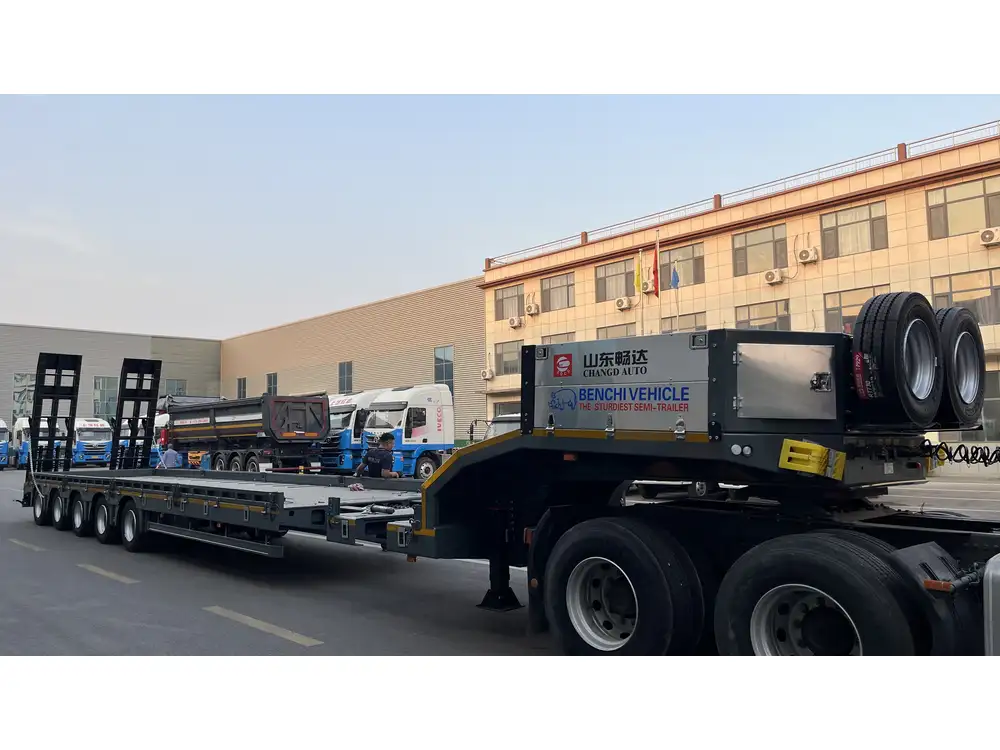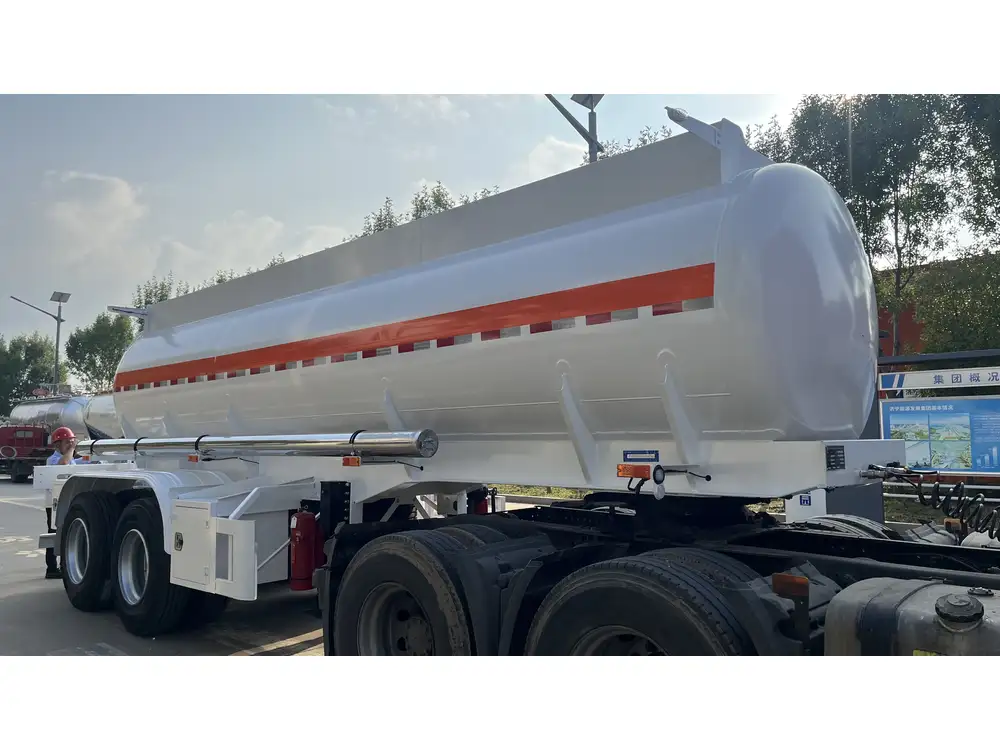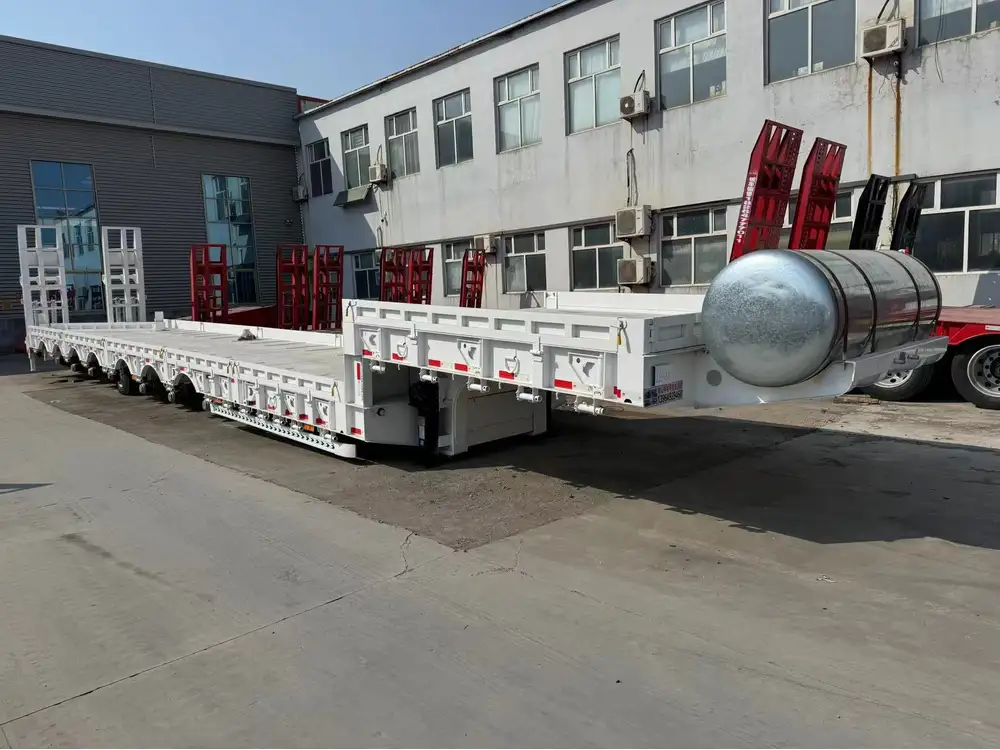When venturing into the expansive world of semi-trailers, one question often surfaces: how wide is a semi-trailer inside? This seemingly straightforward inquiry has significant implications for logistics, cargo handling, and transportation efficiency. In this comprehensive guide, we delve into the intricate aspects of semi-trailer dimensions, including their regulatory constraints and practical applications.
1. The Standard Dimensions of Semi-Trailers
1.1 Overall Width Regulations
In the United States, the standard legal width for a semi-trailer is 8.5 feet (102 inches). This width is crucial for highway compliance and is mandated by federal law to ensure safety and accessibility. However, certain specialized trailers, such as flatbeds or those used for transporting oversized loads, may have different regulations that permit greater widths, typically up to wide loads of 12 feet (144 inches).
| Dimension | Measurement |
|---|---|
| Maximum Standard Width | 8.5 feet (102 inches) |
| Oversized Load Width | Up to 12 feet (144 inches) |

1.2 Interior Width Analysis
Internally, the usable width of a semi-trailer can vary based on several factors, including the design (whether it is a dry van, flatbed, or refrigerated), the thickness of the trailer walls, and the equipment installed. Generally, the interior width of standard dry van trailers is approximately 95 to 96 inches (7.9 to 8 feet) from wall to wall.
For reefer units, which tend to have insulation and internal structures, the usable interior width can slightly decrease, often measuring around 92 to 95 inches (7.67 to 7.92 feet). Here’s a brief breakdown:
| Trailer Type | Interior Width |
|---|---|
| Dry Van | 95 – 96 inches |
| Refrigerated (Reefer) | 92 – 95 inches |
| Flatbed | 96 inches |
1.3 Calculating Usable Space
Understanding how internal and external widths affect usable cargo space is essential. Cargo height, length, and weight also play critical roles. For efficient loading and unloading, the interior height of standard semi-trailers usually ranges between 13.5 and 14.5 feet, contributing significantly to storage capacity. When calculating effective space:
- Floor Area: Multiply the interior width by the interior length (approximately 53 feet for a standard dry van).
- Volume: Consider interior height to estimate cubic feet available for cargo.
Example Calculation for Dry Van
- Interior Dimensions:
- Width: 96 inches (8 feet)
- Length: 53 feet
- Height: 13.5 feet
Calculating Volume:
[ Volume = Width \times Length \times Height = 8 \, \text{ft} \times 53 \, \text{ft} \times 13.5 \, \text{ft} \, = 5,736 \, \text{cubic feet} ]Such calculations are vital for logistics planners and shipping companies to maximize truckload efficiency.

2. The Impact of Regulations and Design
2.1 Federal and State Regulations
Different jurisdictions have unique regulations regarding trailer dimensions, including width, especially concerning specialized loads. For long hauls and interstate transport, knowing these regulations is essential to avoid fines or delays. Variations can be significant.
| State | Maximum Standard Width | Oversized Regulations |
|---|---|---|
| California | 8.5 feet | Up to 14 feet in certain conditions |
| Texas | 8.5 feet | Special permits for loads exceeding 12 feet |
| New York | 8.5 feet | Requires escort for loads over 12 feet |
2.2 Designing the Semi-Trailer for Efficiency
The structural design of the semi-trailer affects its internal width and overall capacity. Features such as:
- Reinforced Side Walls: Ensure durability, influencing both the total width and internal usable space.
- LiftGates and Ramps: Impact loading capabilities without reducing width significantly.
- Side Doors and Access Points: Must be carefully designed to facilitate efficient loading while adhering to dimensional regulations.

2.3 Types of Semi-Trailers and Their Width Variations
Different types of semi-trailers cater to specific needs. Here’s a concise overview of various designs and their nuances related to width:
| Trailer Type | Typical Features | Usable Internal Width |
|---|---|---|
| Dry Van | Fully enclosed for general cargo | 95 – 96 inches |
| Refrigerated (Reefer) | Insulated walls, temperature control | 92 – 95 inches |
| Flatbed | Open design for oversized or heavy cargo | Approximately 96 inches |
| Step Deck | Lower deck for taller loads, versatile access | 96 inches |
| Lowboy | Low platform for heavy construction equipment | 96 – 100 inches |
Each type of trailer is tailored, and understanding these variations aids in decision-making for transporting specific goods.
3. Practical Implications for Users
3.1 Choosing the Right Trailer Dimensions
Selection is pivotal for efficiency and cost-effectiveness in transport. Choosing the right-width semi-trailer aligns with:
- Type of Cargo: Some goods necessitate special handling which can dictate trailer choice based on width.
- Loading Techniques: Think about whether fork lifting or pallet moving equipment will be required.

3.2 The Role of Weight Limits
Cargo weight heavily influences loading practices and ultimately the effective width required for securing cargo. Federal regulations state that the maximum weight for a load on a semi-trailer is 80,000 pounds when the truck is fully loaded.
| Dvariable | Impact |
|---|---|
| Width of Trailer | Affects the distribution of weight, influencing safety and efficiency. |
| Type of Cargo | Heavier items might necessitate wider or sturdier trailers. |
3.3 Load Optimization Techniques
Effective load optimization is critical in maximizing the utility of semi-trailers. Here are key strategies:
- Weight Distribution Analysis: Distributing weight evenly helps maintain structural integrity and comply with road safety standards.
- Vertical Space Utilization: Strategically stacking cargo heights can maximize space without violating height regulations.
- Dynamic Loading: Adjusting cargo placement during transport can impact fuel efficiency and vehicle handling.
4. Conclusion: Navigating Width Choices
When considering the depths of how wide a semi-trailer is inside, it’s essential to grasp not just the numbers but the broader implications these has in logistics and operational efficiency. From regulations to design choices and load optimization, understanding semi-trailer dimensions informs better decision-making for manufacturers, shippers, and transport companies alike.

Key Takeaways
- A standard semi-trailer typically has an interior width of 95-96 inches for dry vans, with variations depending on design and functionality.
- Compliance with federal and state regulations regarding trailer dimensions is crucial for legal operation and avoiding fines.
- Selecting the right semi-trailer involves considering the type of cargo, weight limits, and loading practices to achieve optimal transport efficiency.
In navigating the complexities of semi-trailer dimensions, stakeholders in the transport industry find themselves not just answering the question of width but unlocking the potential for enhanced efficiency and profitability in their operations.



